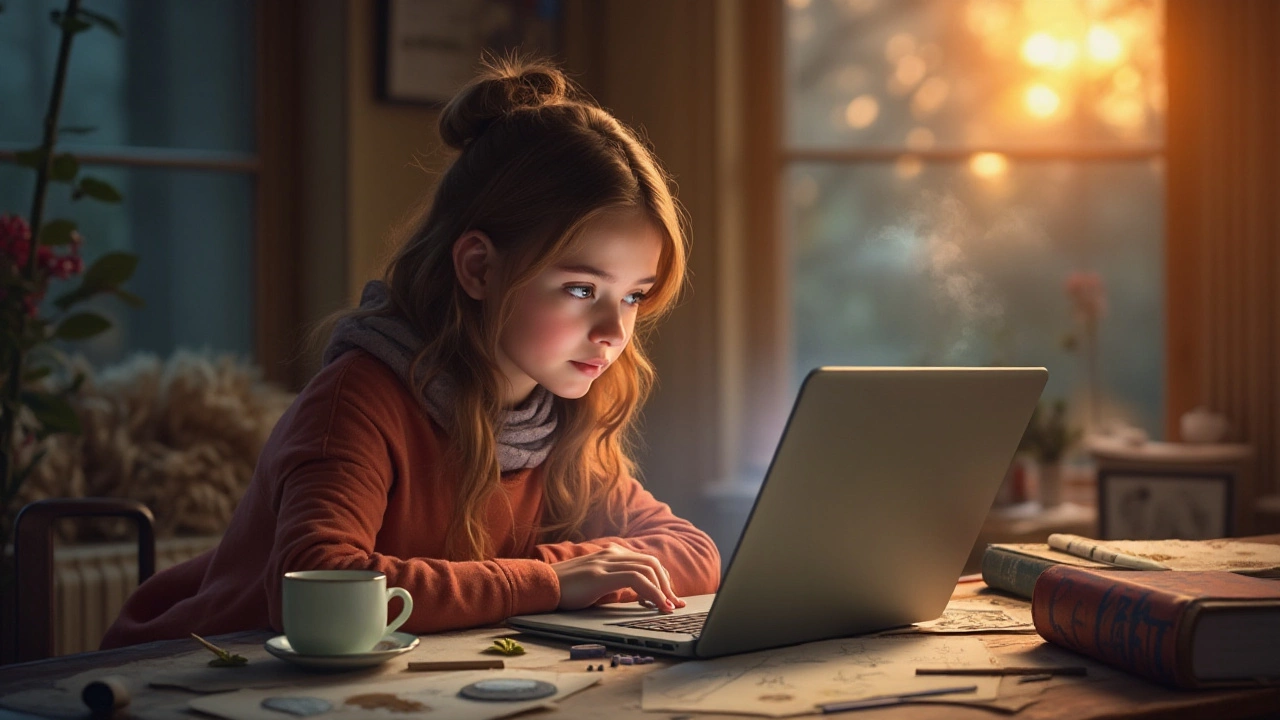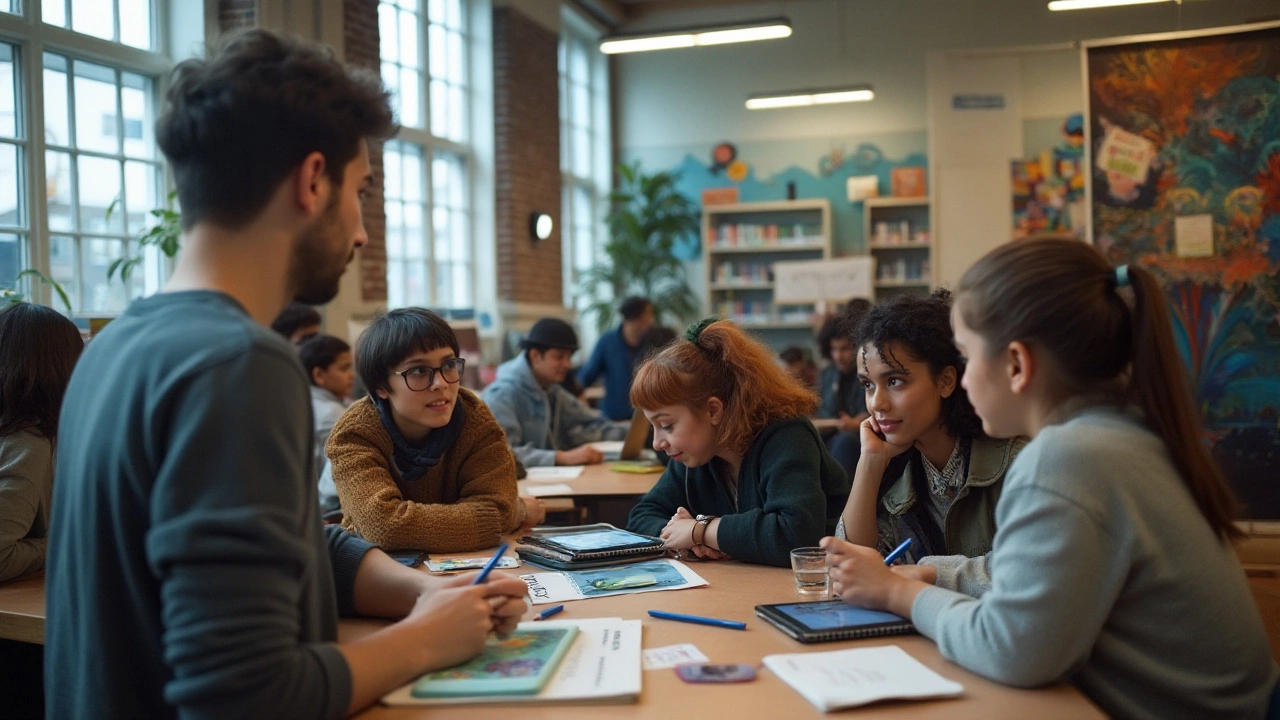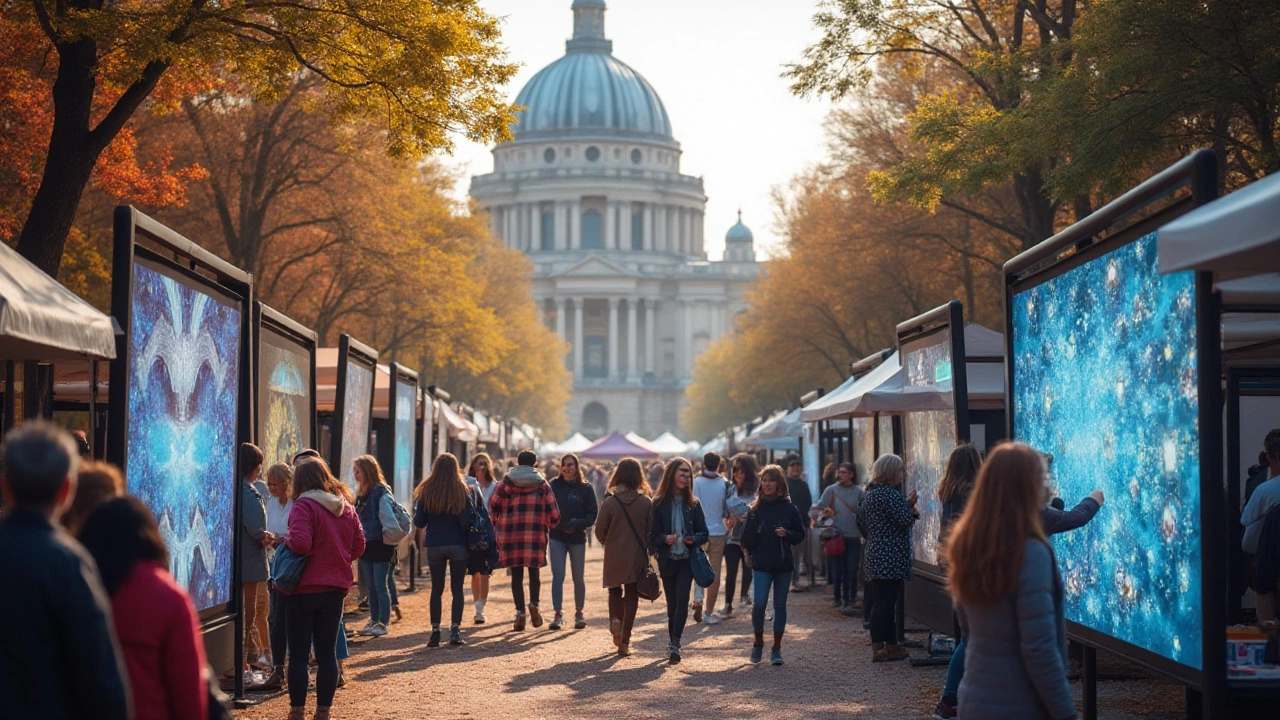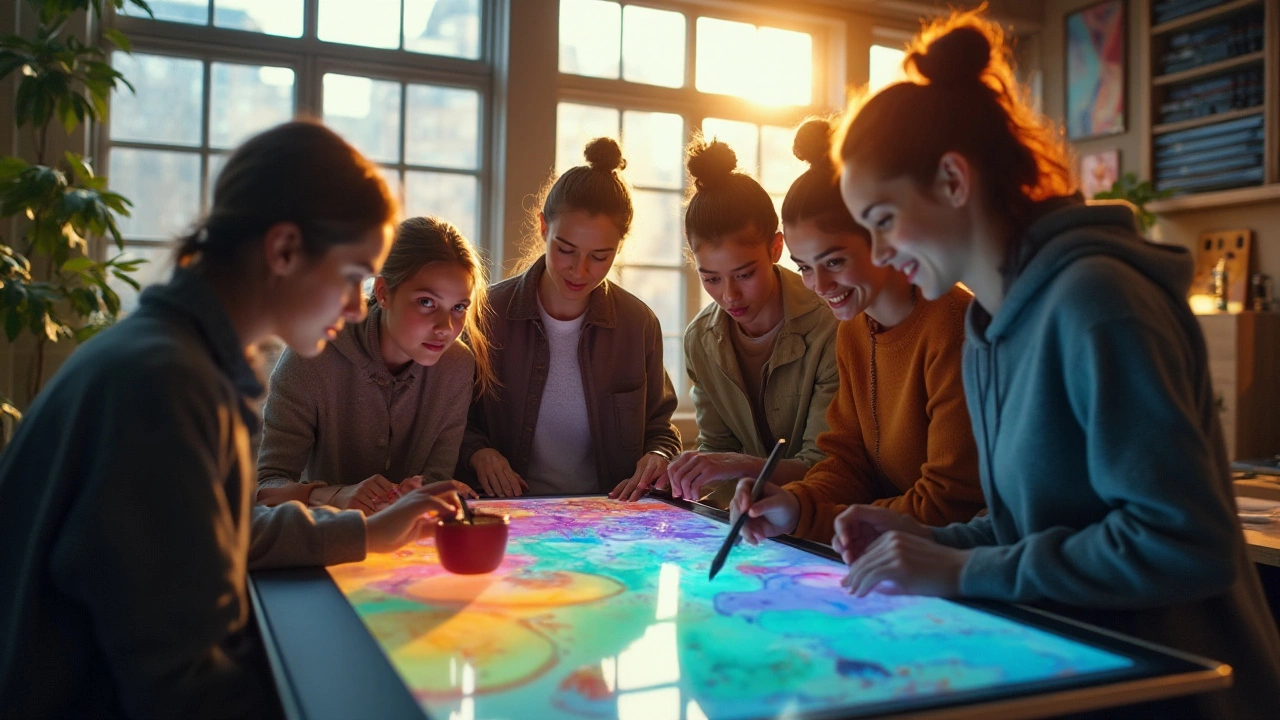In today's fast-paced world, digital art has erupted as a dynamic and ever-evolving form of expression. From intricate illustrations crafted on tablets to vivid animations brought to life on computer screens, the realm of digital art offers endless possibilities. The question that lingers in many curious minds is: Can anyone delve into this captivating universe and create digital art?
The answer, rooted in the democratization of technology and the flourishing of online communities, leans enthusiastically towards yes. With an array of software available, some even free of charge, aspiring artists have the tools they need right at their fingertips. Whether you're armed with a slender stylus or navigating complex graphic software, embracing digital creativity does not demand formal art training but rather a zest for exploration and a willingness to experiment.
- What is Digital Art?
- Tools and Software for Beginners
- Cultivating Creativity in the Digital Realm
- Tips for Aspiring Digital Artists
What is Digital Art?
Digital art is a modern creative practice that utilizes technology as its essential medium. It spans a wide array of artistic creations, from intricate digital illustrations and photo manipulations to captivating animations and immersive virtual realities. The metamorphosis of traditional art into the digital sphere has sparked a revolution, allowing artists limitless possibilities in style, technique, and presentation. This evolutionary art form is not confined by the constraints of physical materials, opening a door to innovation and experimentation that continues to redefine the boundaries of creativity.
The origins of digital art can be traced back to the advent of computers, gaining prominence in the 1960s and 70s with pioneers like Frieder Nake and Harold Cohen experimenting with algorithm-based art. These early endeavors paved the way for contemporary digital artworks that harness powerful art tools and software to manipulate pixels on a screen. As technology evolved, so too did the capabilities of artists, transforming how art is both produced and consumed. In recent years, there has been a surge in the popularity of digital platforms as markets for art, where creators engage with vast audiences through social media and specialized online galleries.
Digital art encompasses a vast spectrum, including several distinct genres. One of the most popular branches is digital painting, where artists mimic traditional painting techniques on digital canvases with the use of styluses and tablets. Digital sculpture, meanwhile, explores three-dimensional forms crafted within software environments, a field that has gained traction due to its applications in gaming and film. There are even conceptual artists who challenge the viewer's perception of what art can be, integrating interactivity and artificial intelligence to create dynamic experiences. As writer Paul Graham once noted,
There are exceptions, of course for many, digital art is no longer just an art; it's an immersive experience that challenges the limits of what we understand creativity to be.
Today, digital art is not just about creating visually appealing works but also about breaking down the barriers of access. This accessibility is a cornerstone of digital art's rise, as creators from diverse backgrounds and geographies share their visions without the barriers imposed by traditionally high costs of materials and spaces. Many beginner artists, armed with just a smartphone or a personal computer, can dive into digital creation, fueled by abundant resources such as online tutorials and vibrant support communities. What stands as a key differentiator, marking digital art from its tangible counterparts, is this cost-effectiveness and global reach.
Indeed, with the rise of NFTs, or non-fungible tokens, the digital art world has also seen an economic boom. This new market environment allows artists to sell their work directly to buyers in digital form, with blockchain technology ensuring authenticity and originality. According to a 2023 report by Art Basel and UBS, digital art sales witnessed record growth, signifying the growing acceptance and value attributed to this medium. This evolving landscape not only acknowledges digital art as a legitimate art form but also as a financially viable career path for aspiring artists.

Tools and Software for Beginners
Dipping your toes into the vibrant world of digital art can be as thrilling as it is intimidating. The plethora of tools available today ensures that anyone keen on learning has access to resources that cater to every skill level and budget. This accessibility is largely due to a technological revolution that has placed powerful graphic tools into the hands of millions, bound only by the limits of one's imagination. With tablets, computers, and even smartphones doubling as canvases, the barriers to entry are lower than ever.
One of the cornerstone applications for budding digital artists is Adobe Photoshop, a quintessential tool that has dominated the art world for decades. Known for its versatile features, Photoshop offers everything from intricate brush selections to advanced photo manipulation tools. While the software is premium, it often tops the list for those serious about their craft. However, not everyone needs to start with such a heavy investment. For amateurs exploring their creativity, free alternatives like GIMP or Krita provide an excellent playground to hone skills without financial commitment.
On tablets, apps such as Procreate have gained meteoric popularity, especially among illustrators and concept artists. With its intuitive interface and vibrant community support, Procreate is celebrated for being a professional-grade tool that is easy to learn. Its one-time purchase model is another attractive attribute that has encouraged many artists to make it their go-to software on iPads. Described often as a game-changer, one Procreate devotee once said, "The app stripped away the complexities, leaving just me and my art."
For those leaning into vector art, Adobe Illustrator stands out as the among industry leaders. However, it's worth noting tools like Inkscape can deliver remarkable results without the subscription fees. The decision between raster and vector software typically hinges on the type of digital artwork one wishes to pursue. Another dimension to consider is animation; here, programs like Blender, a free open-source 3D creation suite, or Toon Boom Harmony provide extensive capabilities to bring static designs to life.
Finally, here's a simple truth: the best tool is often the one you have access to right now. Artists often find joy in constraints, turning the simplest of resources into masterpieces. This notion is supported by a growing number of artists who start creating on accessible platforms such as tablets and then gradually transition to more specialized environments as their skills mature. There’s no single path to success in digital art—it’s about trying, learning, and, most importantly, enjoying the journey.

Cultivating Creativity in the Digital Realm
Stepping into the digital realm as an artist can be both thrilling and daunting. The canvas is endless, and so are the possibilities. Nourishing one's creative soul in this vast expanse begins with embracing curiosity. Trying new things, experimenting with different digital art forms, and being open to innovative techniques can lead to unique styles and masterpieces. Diving headfirst into online resources and tutorials is a good starting point. Platforms like Skillshare and YouTube offer a treasure trove of free and premium tutorials tailored to a variety of interests, from pixel art to photorealistic rendering. Having instant access to inspiration at the click of a button can spur an artist's imaginative instincts and help them grow their skills exponentially.
Another vital aspect of blossoming amidst digital art is community engagement. With countless forums, social media groups, and dedicated websites, aspiring artists can connect with seasoned professionals and fellow novices. Here, shared experiences and valuable feedback play a pivotal role in refining one's craft. Participating in digital art challenges, such as Inktober or the #DrawThisInYourStyle trend, not only provides artists with fresh inspiration but also expands their horizons, testing their limits in intriguing new ways. In the words of Picasso, "Every act of creation is first an act of destruction." As artists, tearing down self-imposed limitations and preconceived notions is necessary for true innovation.
Setting personal projects and goals can significantly drive the creative engine forward. Whether it's generating daily sketches, embarking on a month-long digital painting challenge, or crafting a personal portfolio, setting objectives injects motivation and direction into the artistic process. A thoughtfully curated portfolio doesn’t just display an artist's skills and accomplishments but also serves as a reflection of their evolving art journey. Setting timelines and measurable targets is crucial, but these should be flexible enough to accommodate unplanned bursts of creativity.
While traditional artists work with brushes, inks, or clay, digital artists use their fingertips or styluses to sketch their dreams. Exploring various software like Adobe Photoshop, Procreate, and Clip Studio Paint reveals different possibilities for creation. Each program has its unique strengths; for example, Procreate is favored for its intuitive interface on iPads, whereas Photoshop’s powerful features are perfect for complex edits and compositions. Trying out various art tools can help artists find the one that resonates with their style. Setting aside time for exploration without the pressure of perfection fosters a healthy creative flow.
In today's digital art world, learning is a perpetual journey. As technology evolves, new tools, techniques, and trends emerge, urging artists to continually adapt and expand their skills. Enrolling in relevant online courses and keeping up with market trends are invaluable strategies to remain a cut above the rest. Visiting art exhibitions and online galleries showcases an array of digital art styles, sparking fresh ideas and perspectives. Engaging with mentors and participating in workshops enhance critical learning experiences, providing artists with valuable insights and expert advice.

Tips for Aspiring Digital Artists
Embarking on a journey into the world of digital art can be as thrilling as it is daunting. With countless resources and tools available today, there’s never been a better time to dive in. But where should one start, and what are the best practices for a budding digital artist? A first step is understanding that like any craft, digital artistry requires persistence and patience. It’s about dedicating time to learn new skills, embracing mistakes as part of the creative process, and gradually honing your ability to convey thoughts through a digital canvas.
New artists should make it a priority to familiarize themselves with a variety of art tools. Programmes like Adobe Photoshop or Corel Painter offer robust platforms, yet don’t shy away from more accessible options like Procreate or Krita. Each tool has unique features catering to different styles and methods of creation. Consider starting with free trials or beginner versions to explore what works best for your style and workflow. With the option of customizing brushes or utilizing preset palettes, these tools can turn any idea into a digital masterpiece. Keep experimenting and refining your toolset as you discover new facets of your artistic voice.
Community is another invaluable resource for an aspiring artist. Joining online groups and forums provides not just inspiration but also guidance and feedback crucial to your growth. Platforms like DeviantArt, ArtStation, or even social media groups centered around digital art can propel your learning forward. You’ll encounter diverse perspectives and techniques, fostering a richer understanding of various styles. As cultural theorist Marshall McLuhan noted, "Art is anything you can get away with," and the digital art community exemplifies this open, engaging ethos. Engaging with peers also builds a supportive network encouraging creative evolution.
A practical aspect to focus on is developing a structured routine or practice schedule. Just as musicians play scales or athletes train regularly, consistently practicing through drawing daily, setting challenges, or completing online tutorials refines skills over time. Developing specific goals such as improving shading techniques, learning to use layers effectively, or understanding color theory, provides clarity and direction to your practice. Use timers to manage focused practice periods or create a digital "sketchbook" where you can freely explore ideas and techniques without fear of judgement.
Embracing technology doesn’t mean leaving traditional methods behind. Many artists find incredible value in blending analogue and digital practices. Sketching with pen and paper to develop initial ideas, then translating these into the digital realm offers another layer of depth to your art. It helps to bridge the gap between tactile creativity and the limitless possibilities that technology offers. This fusion of methods encourages a holistic approach, enriching the creative process and possibly leading to a distinctive style that defines your work in the digital art landscape.
Lastly, keep an eye on emerging trends and innovative techniques shaping the art world. Whether it’s exploring the potential of virtual reality, diving into 3D modeling, or understanding NFTs' impact on digital ownership, staying informed empowers artists to not just adapt but thrive. As artists, it's integral to remain curious, always questioning and exploring what’s next. This open-mindedness not only keeps your art fresh but also ensures you're always ready to embrace new opportunities that come your way on this fascinating creative journey.

